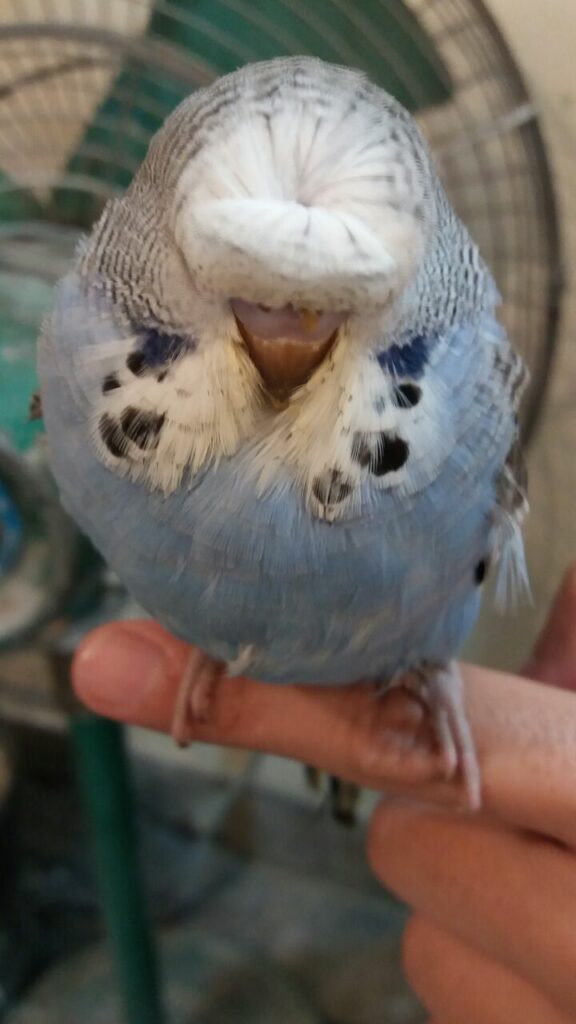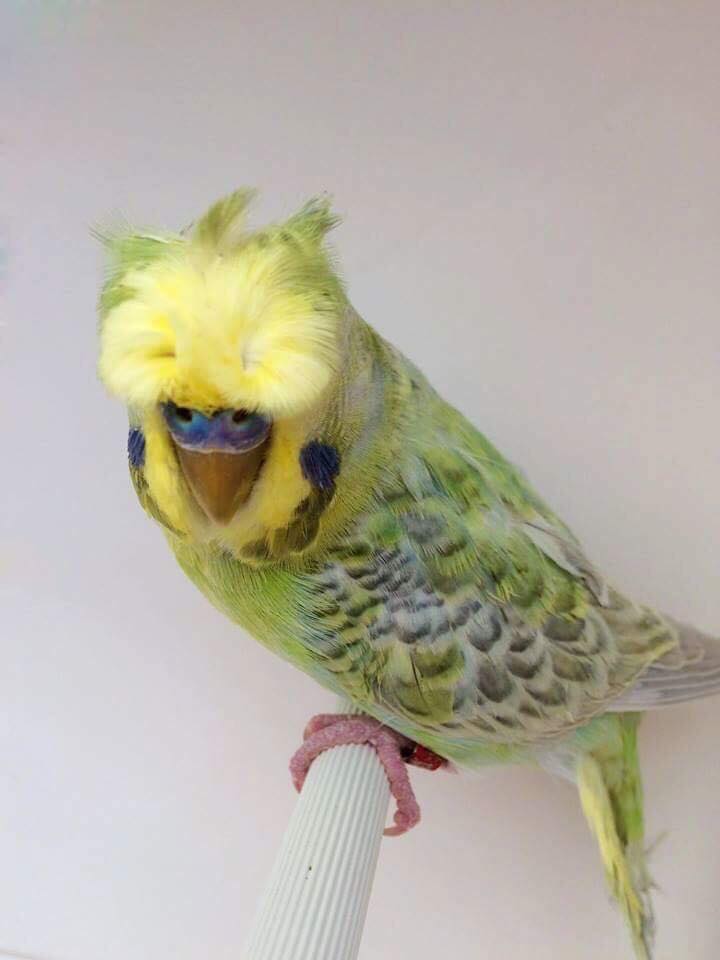Crested is a mutation that alters the direction that certain feathers grow on the head. Despite being around for nearly 100 years, first popping up in many Australian aviaries in the late 1920s, understanding of their genetics is not absolutely certain. Many theories attempt to explain the odd half-dominant half-recessive behavior of the mutation, a majority of which label it as polygenic (the result of several genes instead of one). In short, however, Crested budgies are extremely diverse in their crest size and shape, and can produce Crested offspring even if they are crestless themselves.
After being exported to Asia, Europe, and Canada, several strains (varieties within the mutation) began to form. The European strain, or Continental strain, was formed first in the 1940s, followed by the American strain (developed in Canada) in the 1950s, and finally the Japanese strain in the 1980s. The latter was incorporated into Hagoromo or “Helicopter” budgies.
The American strain was, at one time, associated with a lethal gene causing early death among chicks. However, this association was only found by a single 1963 study whose results were later disregarded due to improper scientific process. With no further evidence in the decades since, it is safe to assume no such lethal gene exists on a wide scale.
There are three main varieties of Crested budgie: the tufted, half-circular, and full-circular. Tufted or “cockatiel-crested” budgies have a small group of outward-pointing feathers on the very front of their heads (pictured first). Half-circular Crested budgies have a group of feathers extended outward in a half-circle shape, much like a human hairstyle (pictured second). Lastly, full-circular Crested budgies are like the prior but with those feathers fully encircling the head (pictured third). On rare occasions, two or even three crests (pictured fourth) can be present on a single individual at once.





